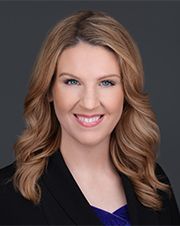Quantifying the Business Impact of Seismic Technology to Deepwater Exploration
OR
SEG members, view the course for free!
Format: Virtual Webinar. 45 min. presentation followed by 15 min. Q&A
An optional post-lecture workshop will immediately follow each lecture for expanded Q&A and networking
Session 1, Tuesday, March 8, 2022, 3 pm to 4 pm US Central Time
Session 2, Thursday, May 19, 2022, 9 am to 10 am Beijing Time
Past SEG Recordings SEG Members Free Access Details
Two live sessions are completed. Please scroll down to watch the videos from the recordings below. SEG members, view the course for free!
Abstract
In a low oil price environment, it is more important than ever to prioritize technology projects to ensure the greatest return on investment. There is much pressure to accelerate the time-to-impact of corporate research and technology programs. In many cases, the geoscientists who are developing these breakthrough technologies are expected to demonstrate the value of these initiatives, which requires both a high degree of subject matter expertise and business fluency. In this presentation, we will take a deep dive into representative seismic technology projects and describe an approach to forecasting the impact of these projects in an exploration context.
A key element of exploration is establishing the chance of success of a prospect. Chance of success is assessed by interpreters by integrating their geologic knowledge and insights with the seismic data. With better seismic technology, uncertainty and risk can be better quantified and therefore more informed drill decisions are made. This leads to fewer dry holes and, ultimately, more barrels per dollar spent. With faster processing and interpretation of seismic data, a prospect portfolio can be high-graded holistically, with more time and energy focused on the most promising prospects. We will present a practical methodology to quantify the impact of seismic technology advancements, enabling geoscientists to effectively communicate the value to business decision-makers.
Your Instructor

Laura Bandura advises on strategy and performance improvement opportunities across the value chain within the Chevron Gulf of Mexico Business Unit. Laura has had a diverse career in her nine years at Chevron pioneering applications of machine learning to seismic imaging and interpretation, and cross-functional digital portfolio management. Prior to Chevron, Laura was a physicist at Argonne National Lab and the Facility for Rare Isotope Beams (FRIB) at Michigan State University, specializing in charged particle beam dynamics with applications to nuclear physics. She co-designed the fragment separator at FRIB, which is used to isolate and discover new isotopes.
Laura has published research articles and patented inventions across a variety of fields, including geophysics, machine learning, nuclear science, and charged particle beam dynamics. She received her PhD and M.S. in Physics from Northern Illinois University and B.S. in Biology from Aurora University.
